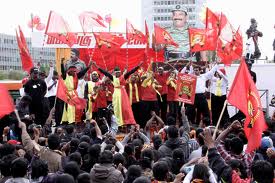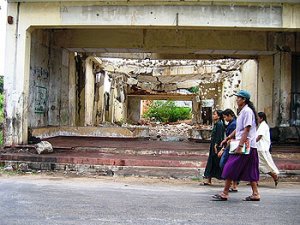At the end of the ’90s, the Albanian minority in Kosovo intensified its political pressure to gain independence from Serbia. Kosovo was a province with a particular meaning in the Serbian history: it was the place where the Serbian kings resisted the Ottoman invasion. The Serbian cultural identity sprung from Kosovo. In the last 20 years immigration from the nearby Albania increased the size of that ethnicity and in the mid ’90s Albanian could correctly affirm of being the majority in Kosovo. Serbia is culturally and politically on the side of Russia (for religious, linguistic, historical and political reason), therefore it is arguable that its international status was very low in those years.
The Albanian independentist forces joined to create the Kosovo Liberation Army (KLA). The US decided to punish the Russian presence in Europe, hitting their closest ally, Serbia. Therefore they supported the Albanian request for a separated Kosovo.
It is interesting to note that history of the Kosovo Liberation Army as a terrorist group. In 1998 Robert Gelbard, envoy of the American government, speaking of the KLA said “without any questions, a terrorist group”12. The UN resolution 1160 used similar words34. But later on the US government approached the KLA leadership to represent Kosovo in the negotiations with the Serbs. The Wall Street Journal in February 1998 mentioned the removal of the KLA from the list of terrorist organization5, when discussing its linkages with Al Qaeda. France didn’t delist the KLA until late 1998, after UK and US pressure6. KLA is still present in the list of MIPT Terrorism Knowledge Base7 and is considered an inactive group by the National Consortium for the study of Terrorism and Responses to Terrorism from the Homeland Security8.
The KLA was considered a terrorist organization because of its linkages with organized crime and with Al Qaeda and they started a campaign of attacks against the Serbian civilians9. The common argument was that Kosovo people had the right for self-determination10, even when terrorist means were used to achieve that goal.
Now, I suppose that very few will disagree with the fact that the LTTE was a liberation army, which used terrorist means to achieve self-determination for its people.
It is wrong to state that the LTTE lost international support because it was a terrorist outfit. Quite on the contrary: it was a terrorist organization because it lost international support. This could sound pedantic, but very often it’s the core of the debate. All the atrocities committed by the LTTE do not explain its status. The LTTE failed to secure the support of main international sponsors (like US and India) and therefore it was fighting alone. And when you have guns and bank account, but no consensus, per definition you’ll be labelled “terrorist”.
It’s not about conduct, but about relationship. The LTTE killed innocent civilians, but this is not the point. LTTE was isolated and that is the reason for its terrorist status.
6 Derek S. Reveron and Jeffrey Stevenson Murer, eds., Flashpoints in the War on Terrorism. (New York: Palgrave, 2006)



















